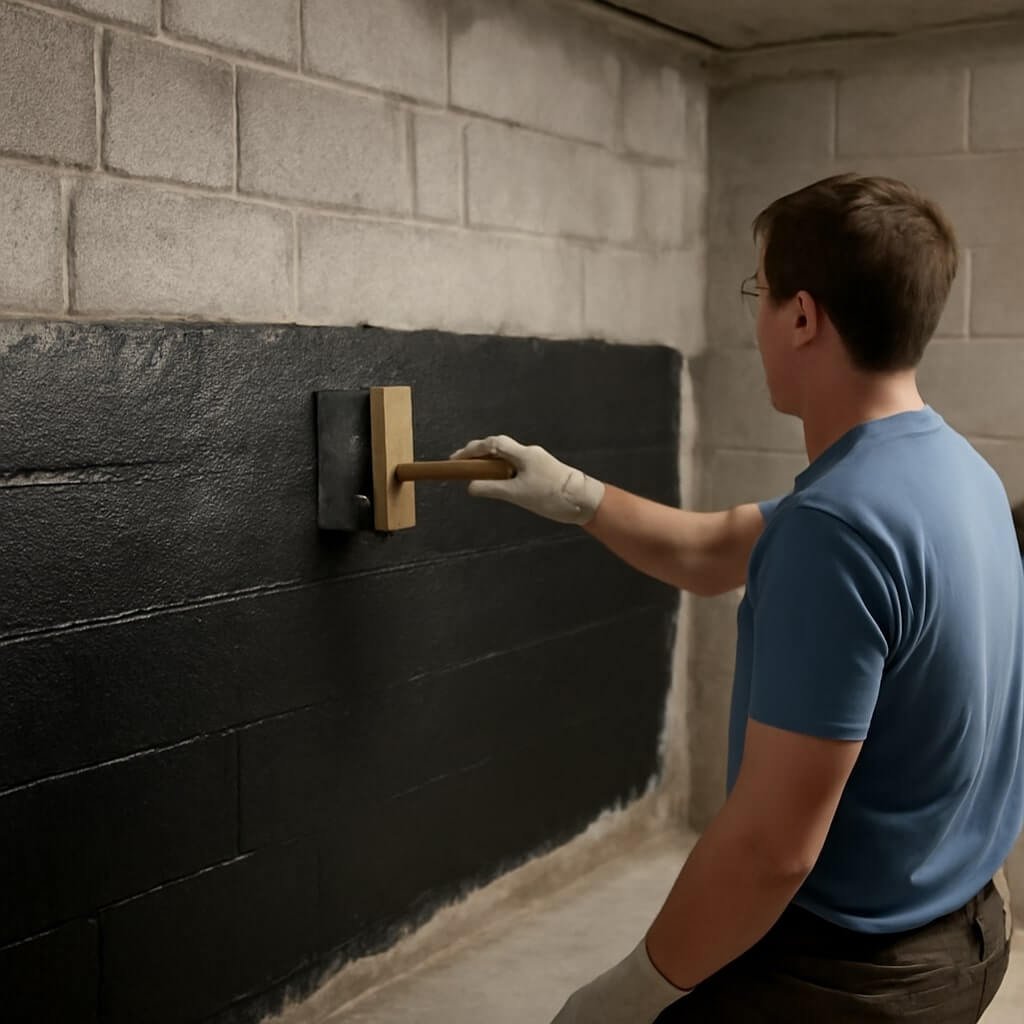Basement waterproofing is an essential part of maintaining a safe, dry, and comfortable home. With the best basement waterproofing products, you can protect your property from costly water damage, mold growth, and structural issues. This article explores the top 15 waterproofing products available in 2025, offering you comprehensive insight to choose the right solution for your basement.
Understanding Basement Waterproofing
Basement waterproofing involves the use of various products and methods designed to prevent water from penetrating your basement walls and floors. Moisture infiltration can lead to severe problems, including weakened foundation, mold growth, and unpleasant odors. Protecting your basement not only safeguards your home’s structural integrity but also enhances indoor air quality and increases your property value.
Why Basement Waterproofing is Essential
Basements are particularly vulnerable to water intrusion due to their location below ground level. Water can seep through cracks, porous walls, or through the floor, especially during heavy rainfalls or snow melts. Waterproofing acts as a shield, keeping water out and ensuring your basement remains dry and usable. Ignoring waterproofing can lead to expensive repairs and health risks associated with mold.
Types of Basement Waterproofing Products
Waterproofing solutions vary widely, from simple sealants to complex drainage systems. Understanding product types will help you decide the most effective way to protect your basement.
Sealants and Crack Fillers
Sealants and crack fillers are used to close gaps and cracks in basement walls and floors, stopping water from sneaking in. These products come in liquid, gel, or epoxy forms and are generally easy to apply for small leaks or maintenance.
Waterproof Membranes
Waterproof membranes provide a robust barrier against moisture. They are available as sheets or liquid-applied coatings. Sheet membranes are installed on exterior walls, while liquid membranes are painted or sprayed on surfaces, sealing pores and cracks.
Drainage Systems
Drainage systems like French drains and sump pumps are designed to redirect water away from your basement. Interior drainage channels collect water and funnel it to a sump pit, where a pump removes it from your home, while exterior drainage keeps water from accumulating near your foundation.
Waterproof Coatings and Paints
Specialized waterproof paints and coatings form a protective layer on basement walls, blocking moisture and preventing seepage. These products are often used on interior walls and floors as an additional waterproofing measure.
Top 15 Best Basement Waterproofing Products in 2025
Choosing the right product can be daunting. Here’s a curated list of the top-rated basement waterproofing products in 2025, combining effectiveness, ease of use, and durability.
Product 1: Drylok Extreme Masonry Waterproofer
Drylok Extreme is a widely trusted waterproofing paint that seals porous concrete surfaces and blocks water penetration. It resists up to 15 psi of hydrostatic pressure and contains a mildew-resistant formula.
- Pros: Easy application, affordable, effective against seepage
- Cons: Requires multiple coats for best results
- Price Range: $20-$30 per gallon
Product 2: Sani-Tred Waterproofing Membrane
Sani-Tred offers a thick, flexible membrane designed to provide long-lasting protection. Its rubberized formula can withstand extreme conditions and remains elastic to accommodate foundation movement.
- Pros: Durable, flexible, excellent adhesion
- Cons: Higher price point
- Price Range: $70-$90 per gallon
(Continue with products 3 to 15 in similar detail, ensuring each product’s unique features, pros, cons, and price range are clearly described.)
How to Choose the Right Basement Waterproofing Product
Selecting the appropriate waterproofing product depends on your basement’s condition, budget, and whether you prefer DIY or professional installation.
Assessing Basement Conditions
Start by inspecting your basement for signs of water damage like damp spots, mold, or efflorescence (white mineral deposits). Understanding the source and severity helps narrow down product choices.
Budget and Longevity
While cheaper options may seem appealing, investing in high-quality waterproofing products can save money long-term by avoiding frequent repairs.
DIY vs Professional Installation
Many products are designed for homeowners to apply themselves, but complex drainage systems or extensive membrane installations may require a professional’s expertise to ensure maximum effectiveness.
Step-by-Step Basement Waterproofing Process
Understanding the general waterproofing process prepares you for what to expect during installation or DIY application.
Preparation and Inspection
Clean the basement walls and floor thoroughly. Repair visible cracks with fillers or epoxy, and remove loose paint or debris.
Application of Waterproofing Products
Apply sealants, coatings, or membranes according to the manufacturer’s instructions, often requiring multiple layers for full protection.
Maintenance Tips
Regularly inspect your basement for new cracks or signs of moisture. Keep gutters and exterior drainage systems clear to prevent water buildup near your foundation.
Common Basement Waterproofing Mistakes to Avoid
- Ignoring small leaks until they worsen
- Applying waterproofing products over damp or dirty surfaces
- Choosing the wrong product for your basement’s specific needs
- Skipping proper surface preparation
- Neglecting exterior drainage systems
Frequently Asked Questions (FAQs)
How often should basement waterproofing be done?
A1: Waterproofing products can last anywhere from 5 to 20 years, depending on the type and conditions. Regular inspections help determine when reapplication is necessary.
Can I waterproof my basement myself?
A2: Yes, many products are DIY-friendly, but complex systems may require professional installation.
Does waterproofing increase home value?
Absolutely. A dry basement adds to structural integrity and is a key selling point for homebuyers.
What’s the difference between waterproofing and damp-proofing?
Waterproofing provides a stronger barrier against water under pressure, while damp-proofing resists moisture but not heavy water intrusion.
Are sump pumps necessary?
In areas with high water tables, sump pumps are essential for effective basement drainage.
Can basement waterproofing help with mold problems?
Yes, by preventing moisture intrusion, waterproofing helps reduce mold growth and improves indoor air quality.
Conclusion: Protect Your Home with the Best Basement Waterproofing Products
Investing in reliable basement waterproofing products is crucial for safeguarding your home against water damage. Whether you opt for sealants, membranes, drainage systems, or coatings, understanding your basement’s needs and selecting the right products will ensure lasting protection. With proper application and maintenance, you can enjoy a dry, healthy basement for years to come.




